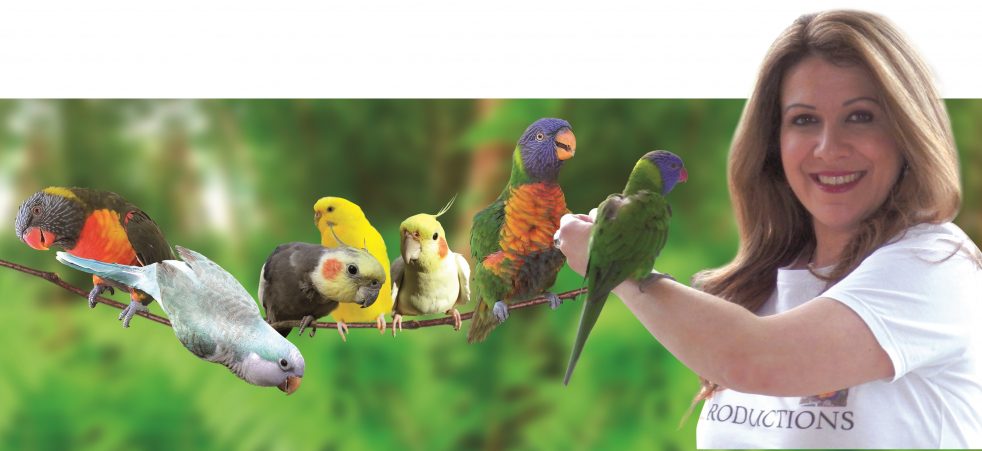Humane Education- Animal Welfare Institute
Animal Welfare Institute
YOU CAN MAKE A DIFFERENCE
A Message to Teachers…
You have the right to offer your students biology
education without harming animals. Sophisticated, stimulating and cost effective alternatives to dissection are available to educate without traumatizing. Ask your students about their preferences, discuss the issue with other teachers, and consider presenting the matter to your school board.
A Message to Students…
You have the right to learn without harming other living creatures. If you learn that you will be asked to dissect an animal in a class, talk with your parents. Let them know why you don’t want to dissect. If your parents are supportive, ask them to write a letter to your teacher explaining why you wish to be given a different assignment. Talk to your teacher and request an alternative project such as making your own model. See if you can come up with an exciting project that will let your teacher know that you’re genuinely interested in learning and not just trying to get out of a class assignment!
Talk with other students—chances are you’re not alone.
BIOLOGY: THE STUDY OF LIVING BEINGS
Biology, with its rich diversity, is a fascinating field of discovery for all who study it. A teacher’s ability to convey interesting and useful material to students can leave an indelible mark on their minds and encourage a lifelong interest in the life sciences. Students’ respect and empathy for other living creatures should be appreciated and encouraged.
Traditional classroom animal dissections undermine these noble aims by harming animals and reinforcing the belief that humans are the only species of moral consequence. The killing of animals to learn anatomy is sustained not by educational merit but by economic interests and the inertia of tradition.
Fortunately, there are many other ways to learn about animals that sacrifice neither animals nor a quality education (see Life Science Projects and Resources sections in this brochure). A variety of alternative methods designed to replace dissection have actually been shown to provide superior learning outcomes for students. Other options include the study of animals in their natural habitats or establishing temporary habitats in the classroom to study smaller invertebrates found locally, such as worms and insects, whose habits are not disrupted by captivity and who can be released following the classroom observations.
DISSECTION’S HIDDEN COSTS
More than 12 million animals are used for dissection in the United States each year. Frogs are typically dissected in the primary and secondary grades, though cats, rats, fetal pigs, fish and a variety of invertebrates are often used too. Dissection supply is a lucrative business, and large biological supply companies may offer up to 70 or more animal species for dissection in their product catalogs.
The procurement of animals for dissection causes unnecessary suffering and death. Investigations into the capture, transport, warehousing and killing of animals destined for dissection have documented cruel and callous treatment. An estimated 20,000 to 50,000 cats are used for dissection each year. Many have been aggressively collected from residential communities in the U.S. and Mexico to be sold to biological supply houses for use as specimens. Frogs are taken by the millions from wetland habitats, piled into sacks, and inhumanely killed by immersion in preservative.
Dissection is also ecologically unfriendly. Most of the animals are caught in the wild, which may disrupt their populations and the ecosystems where they live. For example, frogs play a crucial role in wetland habitats, both as consumers of insects and as food for bird, mammal, reptile, fish and invertebrate predators. Amphibians are declining throughout the globe due to a variety of threats including habitat destruction, pollution, climate change, disease and collection for commercial use.
The formaldehyde used to embalm animals for dissection renders them as hazardous waste that must be discarded accordingly. Formaldehyde is a
Cats, saturated with formaldehyde at a commercial biological supply facility, await packing for shipment to schools for dissection.
Veterinarians:
Dr Ross Perry- Your Holistic Vet and Bird Specialist, Sydney, Australia
 Ross is a holistic bird vet in Sydney. An established Sydney bird vet with years of experience. Ross graduated in 1972 and runs a small animal practice caring for pet birds, cats, dogs, cavies, rabbits, ferrets, rats, mice, reptiles, and fish. Ross served as Dial-A-Vet on radio 2GB for three years and appeared on many animal hospital TV programmes. Ross offers holistic and allopathic health management and is interested in the use of nutraceuticals to help restore and maintain good health and wellbeing. Bird vet sydney.
Ross is a holistic bird vet in Sydney. An established Sydney bird vet with years of experience. Ross graduated in 1972 and runs a small animal practice caring for pet birds, cats, dogs, cavies, rabbits, ferrets, rats, mice, reptiles, and fish. Ross served as Dial-A-Vet on radio 2GB for three years and appeared on many animal hospital TV programmes. Ross offers holistic and allopathic health management and is interested in the use of nutraceuticals to help restore and maintain good health and wellbeing. Bird vet sydney.
Australian Veterinary Acupuncture Group
Berwick, Victoria, Australia
Welcome to the online home of the Berwick Veterinary Hospital, located in Berwick in Melbourne’s South Eastern Suburbs.
At Berwick Veterinary Hospital we specialise in canine and feline veterinary medicine and pet care. Our veterinary clinic offers animal medical care, training services and much more.
AVIAN VET DIRECTORY AUSTRALIA




